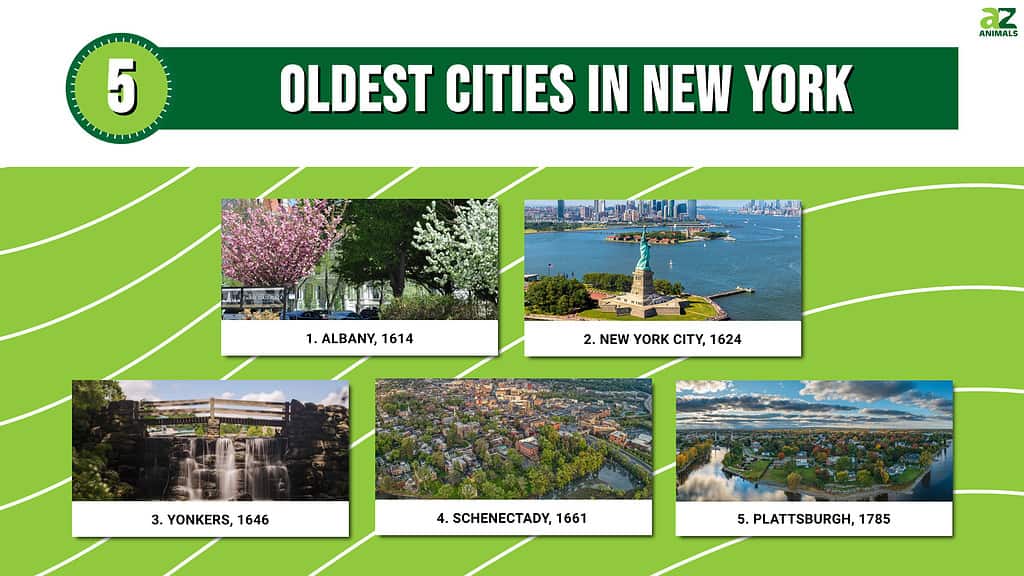
When most people hear “New York,” the first image that leaps to mind is New York City. This global city has tremendous influence, not just over its own state, but over the nation and the world. However, you might be surprised at what the rest of New York State has to offer. In this article, we’ll look at five of the oldest cities in the state. Yes, the Big Apple is one of them, but it’s not the oldest! Journey with us on a trip to the founding communities of one of the original 13 states in the country.
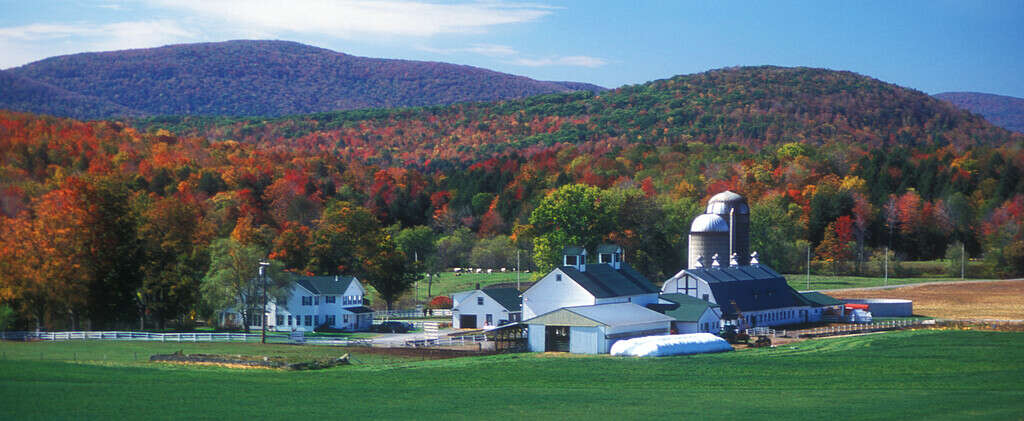
If we didn’t tell you where this picture was taken, would you guess New York?
©iStock.com/johnrandallalves
1. Albany, 1614 (population 99,224)
Albany, the capital of New York, sits on the west bank of the Hudson River. It is about 152 miles north of New York City. Henry Hudson first explored the area in 1609 and claimed it for the Netherlands. The Dutch built a fort and fur trading post there but ceded it to the British in 1674. Formerly called Beverwijck, it was later renamed Albany in honor of a British duke.
Albany played a significant role in the events of the American Revolution. Here, Ben Franklin presented the Albany Plan of Union, a proposal to unite the 13 colonies into one nation. Additionally, British loyalists and prisoners of war were jailed in Albany. Philip Livingston, an Albany resident, was one of the signers of the Declaration of Independence. The town built a thriving economy based in processing iron, lumber, wheat, meat, and furs. It also played a role in the publishing industry and banking. The city was connected to the Great Lakes by the Erie Canal in 1825. This greatly accelerated its development as a major industrial center of the Northeast.
Things to Do
If you want to get a good bird’s-eye view of Albany, head to the top of the Erastus Corning II tower. At 589 feet high, it is the tallest building in the state outside of New York City. History buffs should check out the New York State Museum. It boasts four million specimens of natural wonders, like fossils, minerals, and insects. Eight million artifacts of human culture, such as Native American tools, pottery, and creative works, can also be seen there.
If the creative arts are more your speed, The Egg Performing Arts Center is a must-see. Its unusual design makes it look more like a sculpture than a building. To enjoy the outdoors, consider a cruise on the Hudson River narrated by a historian. Or visit Washington Park, with over 100 species of trees ranging from giant oaks to miniature bonsais. If you’re there in the spring, look up the schedule for the Tulip Festival.
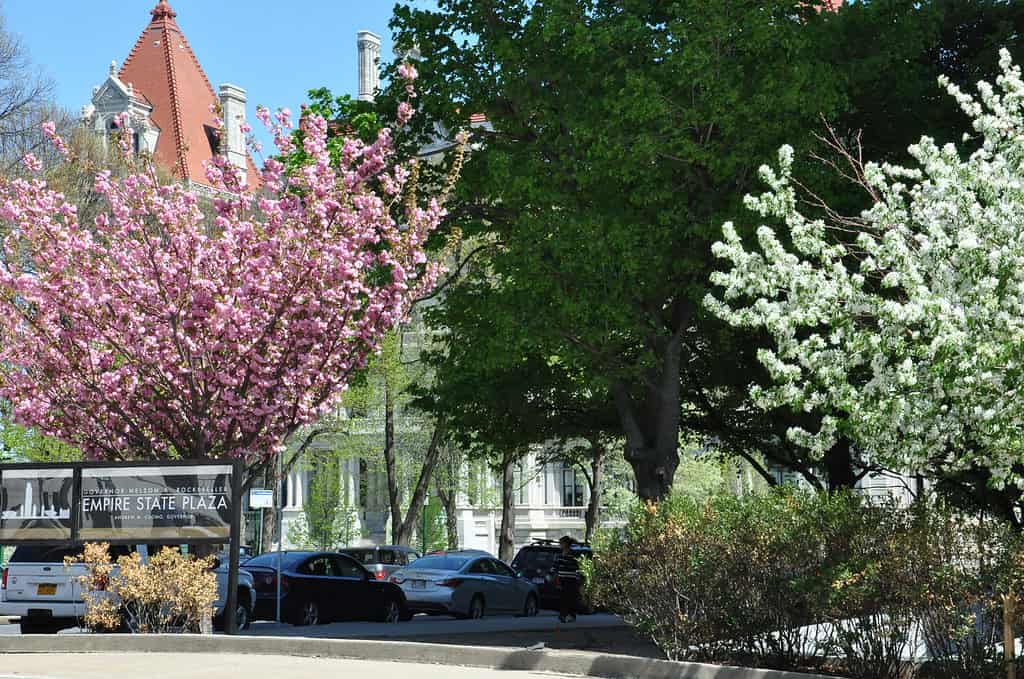
Empire State Plaza in Albany, New York is the site of several state government offices.
©iStock.com/sainaniritu
2. New York City, 1624 (population 8,804,190)
New York City is the largest city in the U.S. by population, with over 8.8 million people. It’s also arguably the most ethnically diverse city in the country, with some 800 languages spoken there. Appropriately enough, for a city that is a microcosm of the world, it’s the headquarters of the United Nations.
NYC has come a long way from its start as a small Dutch settlement named New Amsterdam in 1624. Forty years later, the British took it over and renamed it for the Duke of York. It became a flourishing port, the British headquarters during the American Revolution, and the first capital of the country under the U.S. Constitution. Even though the capital moved to Washington D.C., in many ways, the Big Apple continues to be the unofficial capital of the country as an economic and cultural powerhouse. All over the world, its iconic skyline is instantly recognizable, and visiting or moving to New York City is a lifelong dream for millions of people.
Things to Do
What can you do in New York City? The question is more, “What can’t you do?” These are a few things that many people would consider “musts” on a trip to NYC:
- The 911 memorial to those who perished in the terrorist attacks of 2001 and the new One World Trade Center which, at 1776 feet tall, is currently the tallest building in the Western Hemisphere.
- The Statue of Liberty, gifted to the United States by France and completed in 1886, was the first view of America millions of immigrants saw as they arrived by sea. The copper cladding on the statue is only the thickness of two pennies!
- Times Square at the intersection of Broadway and Seventh Avenue is world-famous as the epicenter of the city’s New Year’s Eve celebration. See gigantic billboards and digital advertisements.
- Broadway is synonymous with theater. There are some 41 different venues for live shows, including newer hits like Hamilton as well as favorites like The Phantom of the Opera that ran for decades.
- Central Park was the country’s first planned, landscaped urban park, right in the center of Manhattan. It includes 38 acres of wooded land with hiking trails that give a genuine feeling of being in nature, as well as manicured lawns, water features, and six miles of paved roads.
- The Brooklyn Bridge was built between 1869 and 1883. It connects the boroughs of Brooklyn and Manhattan over the East River. Pedestrians can use a walkway above the traffic for fantastic views of the harbor.
- Explore ethnic neighborhoods. You’ll enjoy sampling international foods and brushing up on any lingering high school foreign language skills.
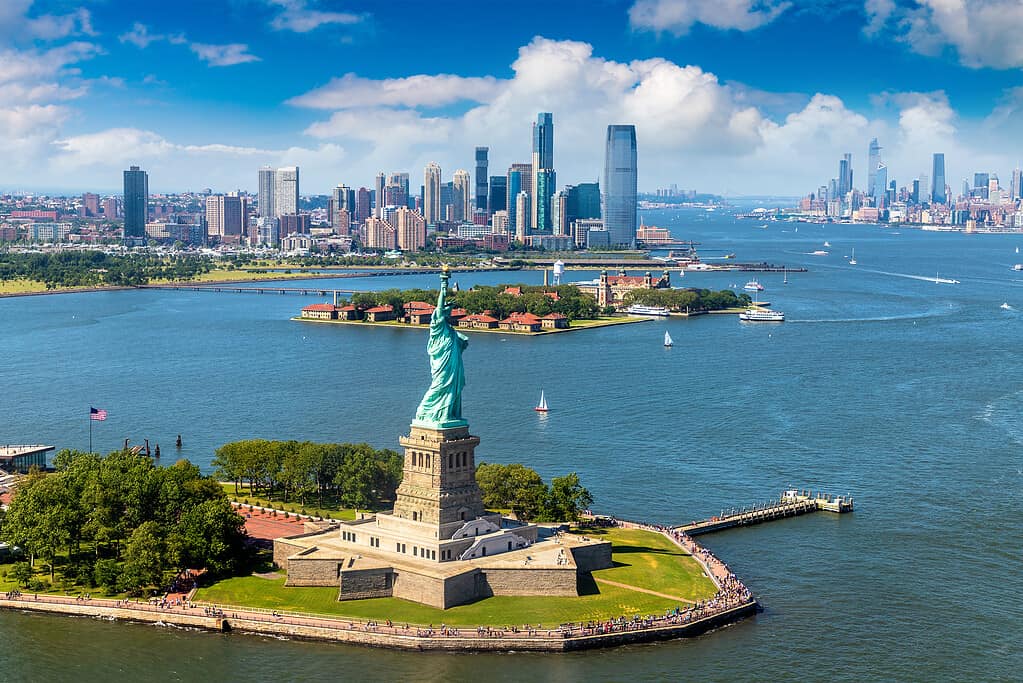
The Statue of Liberty in New York City’s harbor is a must-see monument.
©iStock.com/bloodua
3. Yonkers, 1646 (211,569)
Yonkers is a city in New York located east of the Hudson River. It started with a Dutch land grant and the building of a sawmill. Its unusual name is an anglicized version of the Dutch word “Jonkheer” which means “young gentleman.” The city grew into an industrial center in the 19th century, specializing particularly in carpet production. It was also the birthplace of the famous Otis Elevator Company. In 1898, a referendum was held in several cities in the area about joining New York City. Brooklyn, Queens, and Staten Island all accepted the merger while Yonkers and Mount Vernon decided to remain independent.
Visitors to Yonkers may want to check out the Philpse Manor Hall, with parts of the original house built by Dutch settlers in 1682. The Hudson River Museum features art from all over the world, exhibits showcasing the history of Yonkers, an outdoor amphitheater, and a planetarium. Untermyer Gardens Conservancy is a nice place to see specialized exhibits like the Walled Garden, the Temple of Love, the Sundial Garden, and the Rock Garden. If you’d like a more natural setting, try hiking, biking, or jogging on the Old Croton Trail, which meanders 26 miles through some beautiful countryside.
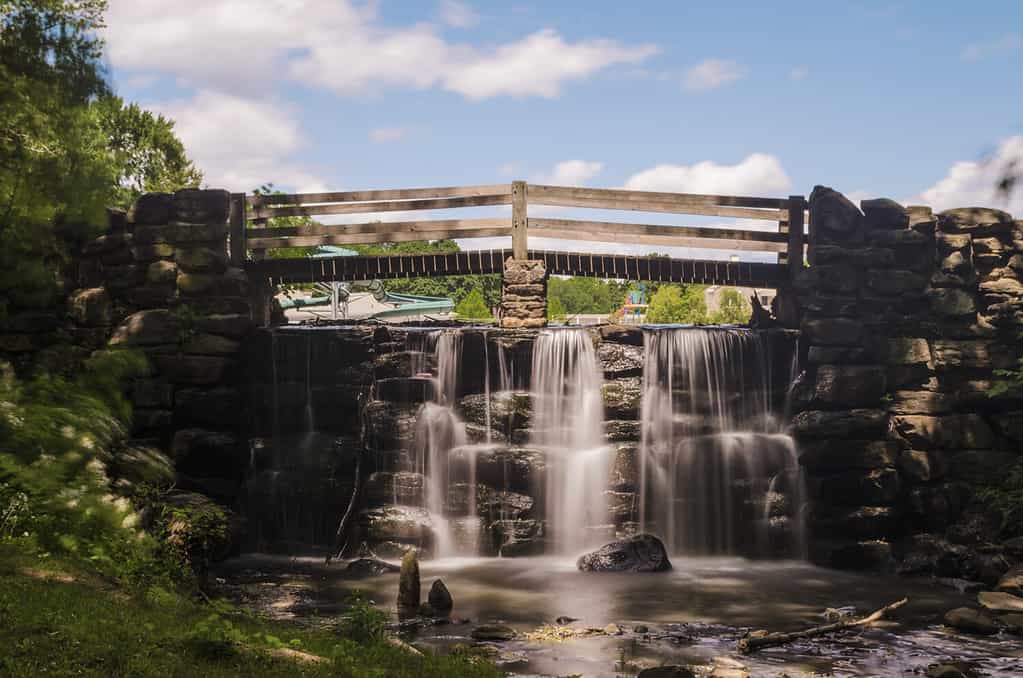
Tibbetts Brook Park Waterfall in Yonkers is a beautiful natural area.
©Kenneth Dean/Shutterstock.com
4. Schenectady, 1661 (population 67,047)
Schenectady is 15 miles northwest of Albany. It got its name from a Mohawk word meaning “beyond the pines.” The area was settled by Dutch farmers who raised wheat and livestock. The city greatly benefited from the construction of the Erie Canal in the 19th century which connected the Great Lakes to the Hudson River and New York City. Schenectady was also well-connected to the rail system and was at one time nicknamed the rail hub of America. Thomas Edison worked there, and the city became the headquarters of the General Electric Company and the American Locomotive Company.
A particularly interesting attraction in Schenectady is the Museum of Innovation and Science, with hands-on displays and over 15,000 artifacts related to sciences and technology. Mabee Farm Historic Site dates to 1705 and is the oldest farm in Mohawk Valley. It was a fur station before being converted into a farm and the original farmhouse is made from logs. For those who are more active, check out Mountain Ridge Adventure Park, which has ziplining, rope swings, hanging bridges, and obstacle courses for all ages. Maple Ski Ridge is a ski and snowboarding area for winter fun.
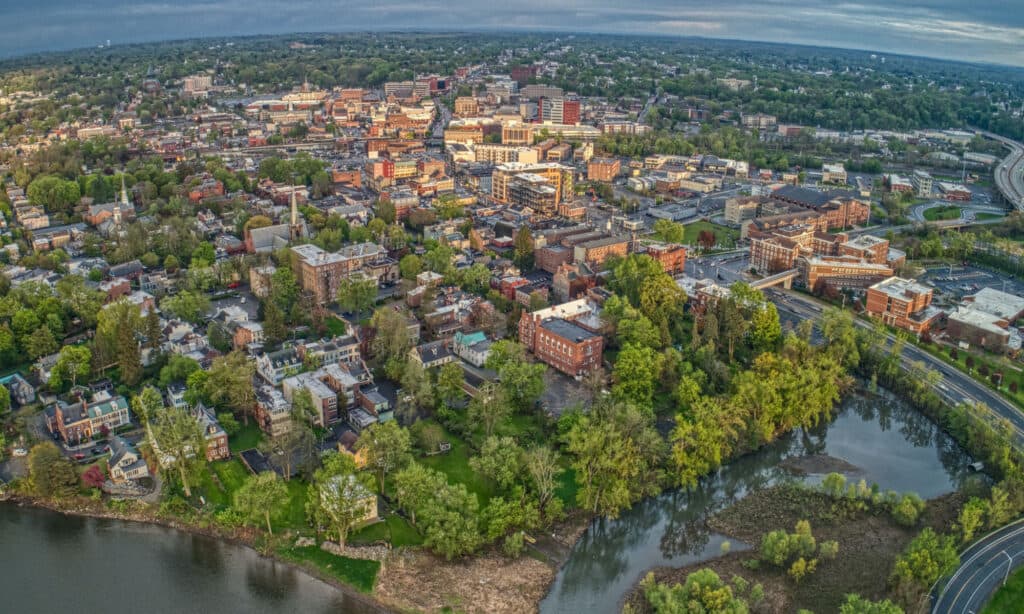
Schenectady, New York, was a major early manufacturing center in the state.
©Jacob Boomsma/Shutterstock.com
5. Plattsburgh, 1785 (population 19,841)
Plattsburgh is located on Lake Champlain not far from the Canadian border. It was founded to strengthen the American position in the region after the American Revolution when Canada remained loyal to the British. It is the location of the final battle of the War of 1812. In modern times, Plattsburgh became the site of a major U.S. Air Force Base. Because of its proximity to Canada, Plattsburgh is a favorite tourist destination for visitors from Montreal and Southern Quebec, so much so that the city has put up bilingual signs in English and French.
The War of 1812 Museum is a good place to learn about a significant era in the history of the city and the country. A lot of people go to enjoy the natural setting. You can fish for perch, bluegill, sunfish, and bass on Lake Champlain. Cumberland Bay State Park has over 100 campsites, sandy beaches, swimming, boating, and paddleboarding. Saranac River Trail runs along the river and is a great place for walking, running, biking, and taking in the scenery. If all that makes you hungry, stop by Pray’s Farmers Market for fresh produce, smoked meats, and cheese.
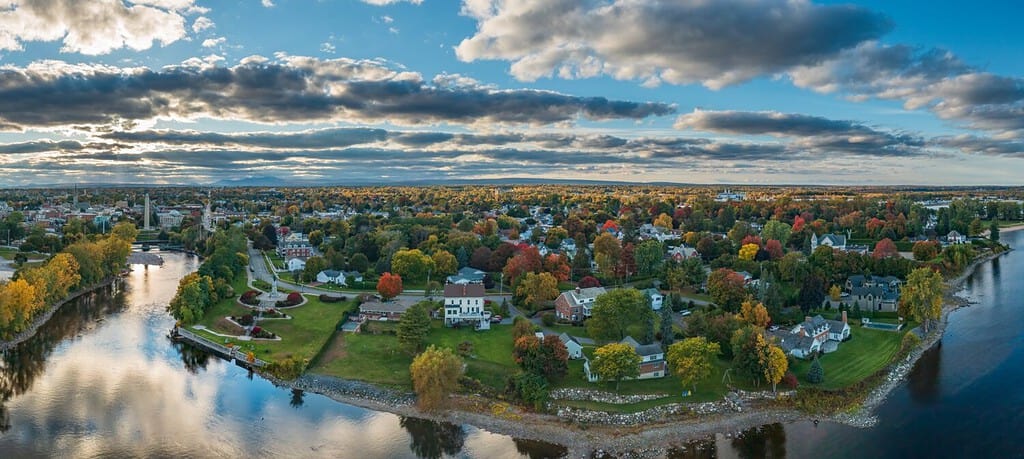
Plattsburgh, New York is a beautiful place to visit or to call home.
©Steve Heap/Shutterstock.com
New York Beyond the City
Without a doubt, New York City offers a lifetime of things to do and see, but don’t limit your experience of the state to one city. Historic smaller cities across the state have their own stories to tell and entertaining activities. So rent a car, hit the road, get away from the hustle and bustle, and discover the New York that lies beyond the city.
Summary of the 5 of the Oldest Cities in New York
| Rank | City | Date Founded/Established |
|---|---|---|
| 1 | Albany | 1614 |
| 2 | New York City | 1624 |
| 3 | Yonkers | 1646 |
| 4 | Schenectady | 1661 |
| 5 | Plattsburgh | 1785 |
The photo featured at the top of this post is © iStock.com/a_Taiga
Thank you for reading! Have some feedback for us? Contact the AZ Animals editorial team.






